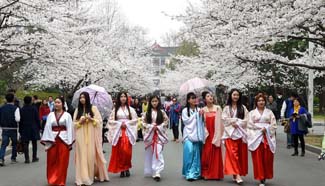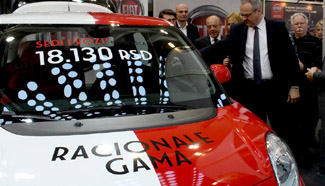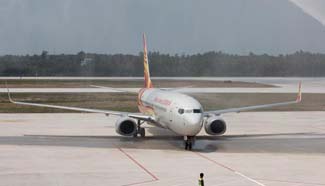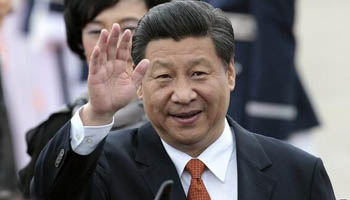????“As a milestone in China’s military development history, this round of reforms is comprehensive and revolutionary, and it involves an unprecedented number of fields and numerous units.” Six military experts – Yin Zhuo, Lou Yaoliang, Du Wenlong, Zhao Xiaozhuo, Zhang Junshe and Li Jing – commented on the reforms disclosed at the Central Military Commission (CMC) meeting. They gave their views in the “Xinhua Insight” column, published by Xinhua News Agency on Nov. 26, 2015.
????Multiple-department System of CMC
??? Reform Content: “The four general headquarters will be adjusted and a multiple-department system under the CMC will be formed.”
????Background: According to the White Paper on China’s National Defense released in July 1998, the Chinese People’s Liberation Army (PLA) is organized with a system whereby the Headquarters of the General Staff, the General Political Department, the General Logistics Department and the General Armament Department are placed under the leadership of the CMC.
????Comment: Yin Zhuo: The current four-headquarters system was established based on the actual situation at that time and played an important role. But it has gradually fallen out of sync with changing circumstances, causing fragmentation, redundancy and divided policies. Reorganizing the old system into multiple military departments, including the staff, execution and service sectors under the CMC, will ensure the forces can carry out military orders efficiently and smoothly.
????General Command Center for the PLA Army
??? ?Reform Content: “A general command center for the PLA Army will be formed.”
????Background: According to the 2006 White Paper of China’s National Defense, the PLA Army has 18 combined corps. The army has no independent leading body, and its leadership is exercised by the four general headquarters. A military area command exercises direct leadership over the troop units under it.
????Comment: Lou Yaoliang: Today, joint operations are becoming ever more complicated and army building ever more specialized. The fact that the PLA Army, or the PLA land forces, lacks a unified command center is a sign that China’s military still holds the “army prevails” thought, which does not fit increasingly complicated warfare demands. The reform of forming a leadership body for the PLA Army instead of it being directly led by the headquarters is an improvement to perfect the leadership system of various service arms, which is advantageous for strengthening combat capacity and the development of the PLA Army.
????Joint Battle Command System
?? ?Reform Content: “The current regional military commands will be adjusted and regrouped into new battle zone commands supervised by the CMC, and a general joint battle command center will be formed to improve the CMC joint battle command organization. A three-tier ‘CMC–battle zone commands–troops’ battle command system and an administration system that runs from the CMC through various services to the troops will be established.”
????Background: Military area commands are military organizations set up according to the administrative divisions of the state, geological locations and strategic and operational directions and operational tasks. At present, the PLA has seven military area commands: Shenyang, Beijing, Lanzhou, Jinan, Nanjing, Guangzhou and Chengdu. Under a military area command are combined army corps, units of various army arms, logistical support units and provincial military commands (garrison commands at the same level). According to the 2006 White Paper on China’s National Defense, the navy, air force and Second Artillery Force direct the military, political, logistical and equipment work of their respective troops and take part in the command of joint operations.
????Comment: Zhao Xiaozhuo: As modern warfare tends to break out suddenly and intensively, decision-making must be fast and decisive so as to grasp fleeting opportunities. This calls for separating army building and administration from the battle command, and separating maintenance of the forces from their deployment. With the reform, which is focused on the command system, the battle command and leadership administration systems are to be formed separately. The battle command system and the administration system will help the Communist Party of China (CPC) and the CMC centralize their leadership, further consolidating the basic principle that the CPC has absolute leadership of the armed forces, which is also subject to the intrinsic law of the global military revolution and meets the demand of modern information-based warfare.
????Cutting 300,000 Troops Reform
??? Content: “(China will) cut troop numbers by 300,000. Administrative and non-combat personnel in the military will be downsized. The proportion and structure of the forces among different services will be streamlined to suit new security needs and operations and to make the new structure more comprehensive, integrated, versatile and flexible.”
????Background: Since the 1980s, China has cut troop numbers three times, by 1 million, 500,000 and 200,000 respectively, to the current 2.3 million. At the ceremony marking the 70th anniversary of the victory of the Chinese People’s War of Resistance against Japanese Aggression and the World Anti-Fascist War, President Xi announced a cut of 300,000 troops.
????Comment: Li Jing: It represents the PLA’s change to the pursuit of quality and efficiency from quantity and scale. The structure of the forces among different services will be changed after the proportions of the army, navy, air force and Second Artillery Force, administrative organizations and troops, officers and soldiers, combat and non-combat personnel are adjusted. A series of adjustments and optimizations will lay a solid foundation to build a powerful battle force.










